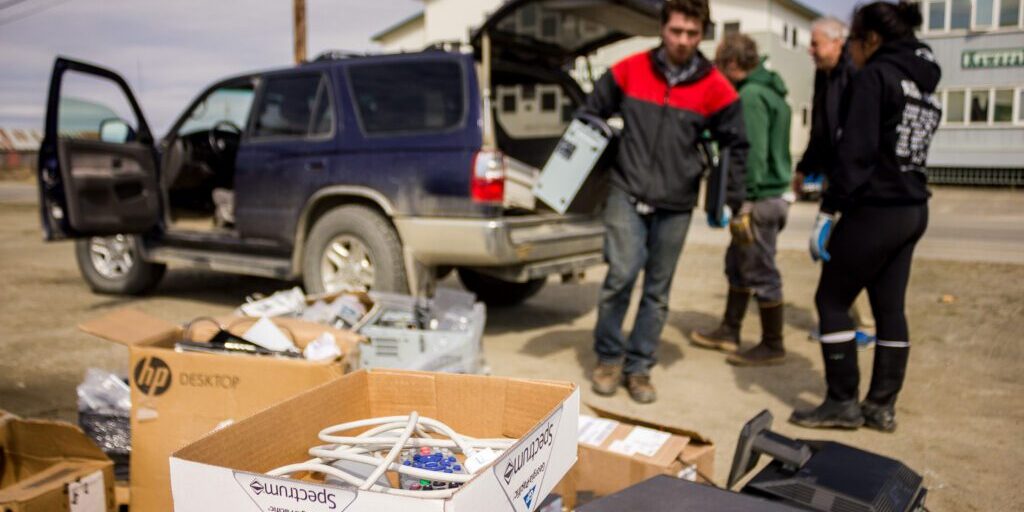Kawerak Inc. facilitated a meeting last month to find community-driven solutions for Nome’s recycling challenges. Kawerak brought in the Zender Environmental Health and Research Group to conduct a feasibility study for the potential project, a concrete step toward building a sustainable future in Nome.
Anahma Shannon is the Environmental Program Director for Kawerak Inc. She described the impetus for the project in an interview with KNOM.
“Even though Kawerak serves the tribes, oftentimes we hear from residents in Nome that are not tribal members, ‘How come you guys aren’t doing more to collect this material or that material? How come you aren’t doing more with cardboard? How come you’re not collecting plastics? And gee, wouldn’t it be nice if we did this or that?’ And so we’ve heard from the community over the years that some people really want a lot more.”
– Anahma Shannon
There isn’t a sheltered and heated building in Nome where people can bring their recycling. Shannon admits that Nome’s recycling locations and facilities limit the quantity and kind of materials that can be recycled. According to business owners like Rolland Trowbridge, these limitations pose a serious threat.
“I mean it’s nice to have tin cans recycled, that’s great. But a tin can left in the landfill is probably pretty low impact. We’re not going to run out of landfill space in our region. We don’t have a space problem. What we do have is a hazardous waste problem.”
– Rolland Trowbridge
As the owner of an automotive company, Trinity Sails and Auto, Trowbridge says he has a good idea of which hazardous materials get into the city…
“And what small fraction of those gallons of things are coolant and oil and solvents…. All that stuff goes somewhere and every ounce of it ends up back in our environment.”
– Rolland Trowbridge
The City of Nome did purchase a tire shredder to deal with the large amount of tires this community produces, as well as a glass crusher, a small baler for aluminum cans, and have sorting options at the landfill.
Rachael Bauman has been involved with the Environmental Program for 10 years and still hasn’t seen this new recycling center “come to life.”
“I do think it’s going to be possible. It’s just taking a while. I think people are willing to do it. I think that the convenience is the most critical part.”
– Rachel Bauman
Shannon says the process for shipping recycling out of the region is a costly one.
Along with soliciting community input, the Zender Group brought in Environmental Scientist Paul Berry to discuss the realities of recycling in rural Alaska.
“The benefits of recycling can also outweigh the costs, you know things that you are going to gain by it. And it’s not only by improvements in the environment and having more longevity in your landfill, but you’re also going to be creating jobs in your community. That’s an important thing to think about in recycling is that it does create jobs.”
– Paul Berry
According to Berry, recycling in rural Alaska doesn’t have to be too costly, especially if local materials and labor can be used.
“It just needs to be done carefully, keeping as much of the work and materials as local as possible.”
– Paul Berry
Shannon says that this is just the beginning of the process of developing a new recycling center. In the coming months, the Zender Group will reach out to villages, tribes, and community members to gather valuable feedback.
You can also find a link to their survey on Kawerak’s website and social media.
Image at top: The 2015 e-Waste Pickup in Nome. Photo: David Dodman, KNOM.




